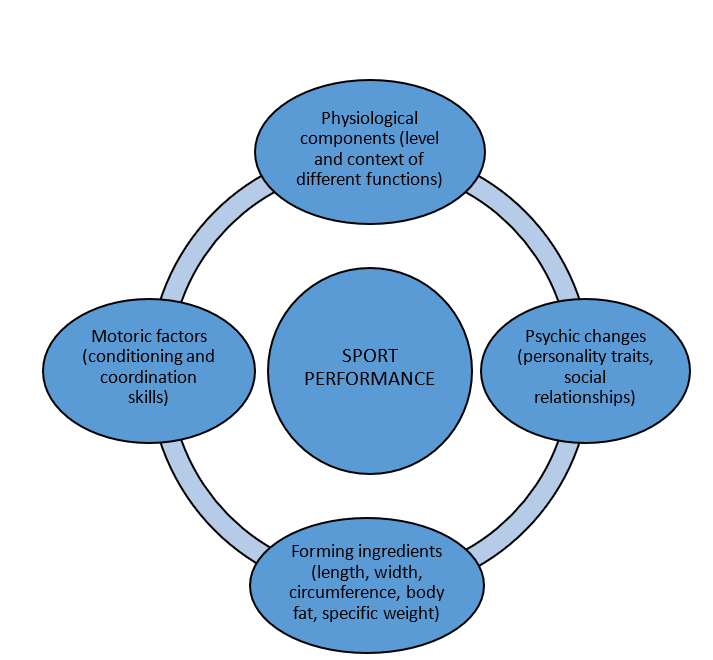Introduction to Sport Diagnostics for psychologists
Introduction - Dedication
The purpose of this sports diagnostic introductory study is to get to know athletes’ psychologists and other professionals about the application of major sports psychological tests, questionnaires and exploration methods. After presenting the detailed and practical techniques of the tests and the inclusion and evaluation of the questionnaire, one of the most important methods used in the fields of applied psychology of sport would be to examine very objective, requiring increased interactivity. The chapters present the structure, operation, fields of application, and special ability testing procedures of these types of tests and the primary interpretation of the data and results obtained from the tests.
#1. The introduction of sport diagnostics {-}
„In the examination of athletes, whether it is sporting or leisure sports, the use of the right science is essential to achieve the best possible performance. Sports diagnostics are already starting from the planning of the beginning of the sport, the formulation of the goals (objective), the necessary planning work (preparation of the workout plan), the preparation of the sport on the basis of the design work (training) and then essentially the feedback of the whole process about the competition and the match. Based on the results of sports diagnostic tests and measurements, you can decide if your work has been of the right quality and quantity, with the right conditions and a workout plan. However, between the design process and the competitions and matches, there is the possibility of continuous feedback through the toolbox of sport diagnostics, which can significantly contribute to achieving the maximum performance (Williams, 2010, cited by Balogh, 2016). Performance diagnostics contribute to the ability to monitor the components that determine sports performance, and we can set it accurately based on the individual, the preparation period, the goal, and so on. tailored to your training plan, macro, meso, or microcycles (Balogh, 2016). At the international level, this area of sports science has been published a lot earlier in Hungary, with a few decades ago. Its legitimacy is unquestionable, as it has all the characteristics of an independent discipline, to name a few, its own conceptual system, its terminology, its own field of research and its own research methods, and the publication and formulation of its results meets the scientific criteria. According to the generally accepted domestic position (Rétság, 2011, cited by Balogh, 2016), in Hungarian terminology, sport diagnostics are now regarded as an independent field of science.”
1.1. The history of sport diagnostics
“At the time of the ancient Olympics, they were trying to improve athletes’ performance based on experience. So, before the games, they went to a special training camp, but they also realized that what they eat, drink or how to share the load (workout) and rest is all the same. The scientific and technical revolution of the 19th century contributed indirectly, along with many other important innovations in sport and physical activity, to the organization of the modern Olympics (1896, Athens). But many sports - football, tennis, basketball, handball, etc. - The system of rules was also formed at that time. The advancement of science has also led to the development of sports sciences and the results of research on sport appeared in a row. In addition to the diverse and new trends of the 20th century, new research trends are emerging in sports science, including sports diagnostics, aimed at enhancing and sustaining sports performance in the field of sports and / or recreational sports.” (Balogh, 2016).
1.2. Testing areas of sports diagnosis
“Sports diagnostics basically strives to measure, predict, and develop athletic performance, and to help achieve maximum continuous performance. Typically, in sport, two components of performance can be distinguished in sports diagnostic tests (Kurmay et al., 2012, cited by Balogh, 2016). One is the athlete’s potential ability, which includes both the physical abilities required to perform a particular motion activity, such as the condition (strength, speed, stamina, flexibility-looseness) and coordination (balance, space, time, skills) skills, on the other hand, technical and tactical knowledge, as well as intellectual skills. The other component is the completed performance, which also means the motivational basis by which the athlete is ready to mobilize his energies to achieve his goal. Nádori (1991, cited by Balogh, 2016) mentions the particular importance of the attitude and position of the athlete’s club and association in performance (Ács, 2015, cited by Balogh, 2016). If either performance or performance is missing or zero, then performance will be weaker or zero (this can actually be described as a product). This means that they are interacting with each other, as mentioned by Nádori (1991, cited by Balogh, 2016). In order for the athlete (capability development) to be able to carry out the training that is often attempted by humans, it is imperative that he possesses the appropriate moral will, as well as the urge to mobilize the effort, the high level of performance.

Figure 1. The components of sport performance
Sports performance is defined by:
Motoric factors (conditioning and coordination skills),
Physiological components (level and context of different functions),
Psychic changes (personality traits, social relationships),
Forming ingredients (length, width, circumference, body fat, specific weight).
As it can be seen on Figure 1., that it is not advisable to reduce sports performance to measure one or two components. Thus, the performance of a football player with good physical fitness indicators is determined by ball coordination, individual technical and tactical skills and even psychological skills. In order to do this, we only need to measure all the possible sport-specific components of the performance and use the diagnostic procedures that can pass on the results to sports professionals (Bognár, 2009, cited by Balogh, 2016).”
CHECKING ISSUES
- How could you define sport performance?
- What are the most important testing areas in sport diagnosis?
- How many components can be measured in sport performance?